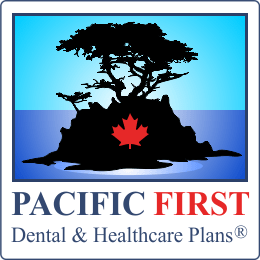Online Medical Dictionary
Letter T
- T (thymine)
- T thymine, a member of the adenine-thymine(A-T) base pair found in DNA.
- T cell
- A lymphocyte, a type of white blood cell that plays a key role in the cell-mediated function of the immune system. Cytotoxic T cells seek out and destroy infectious cells or cells composing a tumour, while helper T cells secrete proteins, when activated, which assist in prompting the body's immune response.
- T-cell Leukemia
- A term used to describe any lymphoid leukemia wherein the T-cells are affected, including Adult T-cell leukemia/lymphoma, large granular lymphocytic leukemia, precursor T-cell lymphoblastic leukemia and T-cell prolymphocytic leukemia.
- T-cell Lymphoma
- A term used to describe any lymphoma affecting the T-cells. The four classes of these lymphoma cancers are anaplastic large cell lymphoma, angioimmunoblastic T-cell lymphoma, cutaneous T cell lymphoma, and extranodal T cell lymphoma.
- Telesurgery
- See Remote Telesurgery.
- Tendinitis
- Inflammation, often acute, of a tendon, usually induced by injury. Anti-inflammatory medication, brace and/or physical therapy tend to be the most common methods for treating tendinitis.
- Tendon
- The fibrous tissue attaching muscle and bone. Also termed sinew
- Teratoma
- An often congenital non-seminomatous germ cell tumour, that may develop such elements as hair, bone or, in rare case, an organ, or the tissue resembling an organ, such as an eye.
- Testicular Cancer
- Cancer of the testicle. Symptoms may include a lump or heavy feeling in the testicle. Testicular cancer has a very high cure rate in North America. Ordinarily, the cancerous testis will be completely removed by a procedure termed inguinal orchiectomy. In stage 2 of testicular cancer development, radiation therapy or chemotherapy may be implemented.
- Testosterone
- A steroid hormone, playing a large role in the development of male characteristics and reproductive tissues, including muscle mass, testis and prostate. Though men tend to home a great deal more testosterone than do women, women show a greater sensitivity to the hormone. Testosterone is found to prevent osteoporosis from developing.
- Thoracic
- Regarding the chest.
- Thorax
- The chest; the area of the body from the neck to abdomen containing the lungs and heart.
- Thrombectomy
- The surgical removal of thrombi (blood clots).
- Thrombosis
- The formation of an obstructing blood clot within a blood vessel, impeding natural blood flow.
- Thrombus
- A blood clot.
- Thrush
- Candidiasis or, more commonly, a yeast infection caused by any of the fungal Candida, usually Candida albicans. Yeast infections mainly occur in the mouth or as in vaginitis, but in immunodeficient persons can develop into a critical disease.
- Thyroid Cancer
- Cancer of the gland in front of the neck that normally produces thyroid hormone which is important to the normal regulation of the metabolism of the body. There are 4 major types of thyroid cancer -- papillary, follicular, medullary, and anaplastic.
- Thyroid Gland
- A malignant neoplasm of the thyroid gland, commonly treated by the surgical removal of the cancerous thyroid tumour.
- Thyroidectomy
- The surgical procedure conducted to remove of a portion or all of the thyroid gland, usually to extricate a tumour, reduce an enlarged thyroid gland (goiter) or in treatment of hyperthyroidism.
- Tibia
- The shin bone.
- Tinnitus
- Commonly referred to as a "ringing in the ears", tinnitus refers to the perception of a noise in the ears when no auditory noise is producing such. Tinnitus may occur as a result of injury, infection, a foreign substance in the ear, a side effect to medication, or a host of other inciters. Dependent on cause, treatment method ranges from radiosurgery to sound treatment.
- Tocophobia
- An abnormal fear of childbirth.
- Tomography
- The process of imaging involving the attainment of a tomogram, a two-dimensional perspective or slice of a three dimensional object, by use of wave. Tomography technology is commonly used in magnetic resonance imaging (MRI), computed tomography (CT scan), positron emission tomography (PET scan), ultrasound, and X-ray tomography.
- Tongue Cancer
- An oral cancer of the tongue; often resulting in the formation of a malignant tumour or growth, usually developing out of the squamous cells. Treatment may involve surgical removal of the cancerous growth followed by course of radiation therapy. Those who smoke tobacco, consume elevated volumes of alcohol or have had prior cases of lip, head or neck cancer are found to be at higher risk for developing cancer of the tongue or oral cancer.
- Tonsillectomy
- The surgical procedure by which the tonsils are removed from the sides of the throat, usually conducted to treat tonsillitis (inflammation of the tonsils) or sleep apnea.
- Topical
- Referring to a medical treatment, medication or substance to be used on a particular bodily surface area; usually referring to the skin or a mucous membrane such as the throat, or the eyes.
- Toxic Shock Syndrome (TSS)
- Illness induced by bacterial toxin, such as Streptococcus pyogenes or Staphylococcus aureus, usually caused by the over-wear of a tampon. Toxic shock syndrome can become fatal if aggressive treatment or removal of the infection is not sought at a medical facility.
- Trachelectomy
- The surgical procedure conducted to remove the female cervix; also termed cervicectomy. Can be performed in treating early detected cervical cancer, preserving capabilities for pregnancy.
- Tracheostomy
- The surgical procedure conducted wherein an opening, or stoma, is incised into the neck through which to create an airway into the trachea or to place a tracheostomy tube through which to receive air. Also termed a tracheostomy, pharyngotomy or laryngotomy.
- Trachoma
- An chronic eye disease caused by an infection of the bacterial species Chlamydia trachomatis. Trachoma is one of the leading causes of blindness in the world. Trachoma may be treated with a course of oral antibiotics.
- Transgenesis
- The process of introducing similar genetic material, or transgene, from one organism into another.
- Triage
- The system used by some medical centres and emergency medical facilities to determine the order in which patients are seen based on the severity of their cases.
- Truncate
- To shorten.
- Tuberculosis
- An infectious disease, commonly referred to as TB, caused by the bacterium Mycobacterium tuberculosis. Tuberculosis most commonly infects the lungs. If left untreated, TB has been known to have a fatality rate of 1 in 2. In many countries tuberculosis vaccination is available in the prevention of this disease. Treatment includes a lengthy course of antibiotics.
- Tumour
- See Neoplasm.
- Tumour Marker
- A bodily indication that cancer or other condition is existent. A tumour marker may be produced by the malignant tumour itself, or by the body in reaction to the presence of the tumour. A tumour marker is commonly indicated by an elevated or abnormal presence of a substance in body tissues, the blood or urine.
- Tunnel Vision
- The loss of peripheral vision, due to any of a variety of environmental or medical causes, while central vision remains intact.
- Turcot Syndrome
- An alternate name for mismatch repair cancer syndrome, as first indicated by the French-Canadian physician Jacques Turcot. Turcot syndrome involves the inherited development of intestinal polyps and brain tumour, due to inherited mismatch repair DNA mutations.
- Typhus
- Refers to any of the acute diseases or infections induced by the bacteria Rickettsia. Common symtpoms of typhus include rash, pain in joints, and fever. Typhus is highly treatable by course of antibiotics, but can become fatal without treatment.



